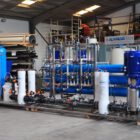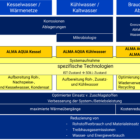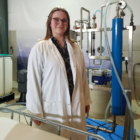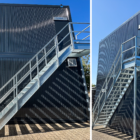Precipitation plant is a key component in industrial wastewater treatment, designed to convert dissolved substances such as heavy metals, phosphates and organic contaminants into insoluble particles in order to remove them from the wastewater. The systems are designed to precisely control chemical precipitation processes to ensure effective elimination of pollutants.
Table of contents
Technical background
A precipitation plant typically consists of several stages in order to control the chemical process efficiently:
Addition of precipitants:
- Precipitants such as iron(III) chloride, aluminum sulfate or calcium hydroxide are dosed into the precipitation system to convert dissolved substances into insoluble compounds. These precipitants react chemically with the dissolved ions (e.g. heavy metals or phosphates) and form hydroxides, phosphates or other poorly soluble compounds.
- Dosing takes place in specially designed dosing stations that ensure the exact addition of chemicals to optimize the precipitation reaction.
Reaction vessels and agitators:
- The wastewater is intensively mixed with the precipitants in the reaction tanks of the precipitation plant. This is done with the help of agitators, which ensure even distribution and an optimum reaction time. This ensures that the chemicals are evenly distributed throughout the wastewater and react completely.
- pH regulation is crucial to minimize the solubility of compounds. Precipitation plants are often equipped with pH sensors and control systems to precisely adjust the pH value.
Flocculation unit:
- After precipitation, the wastewater often remains enriched with finely dispersed particles that are difficult to settle. Flocculants (polymers) are added in the flocculation unit to aggregate the fine particles into larger flocs. These flocs can be separated by sedimentation, flotation or filtration can be removed.
- This unit plays a central role in effective solids separation and is an essential component in optimizing precipitation results.
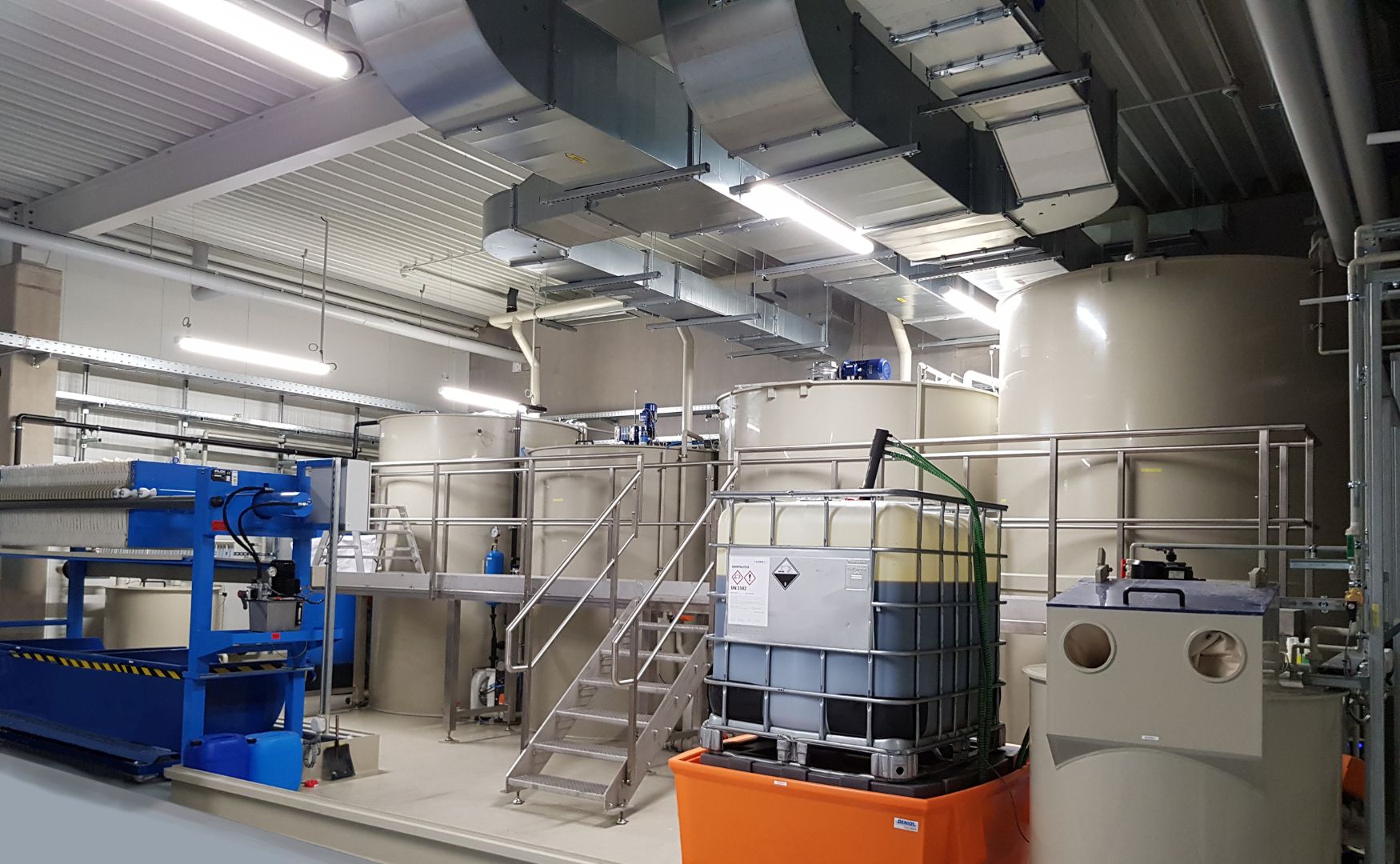
Photo: CP system ALMA CHEM MCW for the elimination of heavy metals, AOX, hydrocarbons and cyanides
Specific processes in precipitation plants
Neutralization precipitation:
- In this technique, the pH value of the waste water is specifically adjusted in order to precipitate metals as hydroxides. This is a frequently used process for treating heavy metal waste produced in the electroplating industry.
Sulphidic precipitation:
- For particularly high concentrations of heavy metals or poorly soluble metals, sodium sulphide or another sulphide is used as a precipitant. This method is effective for removing toxic metals by forming metal sulphides that are very stable and poorly soluble.
Phosphate precipitation:
- In wastewater with high phosphate concentrations, calcium hydroxide (milk of lime) or iron or aluminum salts are often used to precipitate phosphates as poorly soluble compounds. This is crucial to prevent the eutrophication of water bodies.

Photo: CP system ALMA CHEM MCW for the elimination of heavy metals, AOX, hydrocarbons and cyanides
Areas of application for felling systems
Metal processing industry: Precipitation and flocculation processes are used in electroplating and metal processing to remove heavy metals such as zinc, nickel, copper and chromium. This wastewater contains high concentrations of heavy metals, which must be converted into insoluble compounds and removed by a combination of neutralization and sulphide precipitation in order to comply with legal limits.
Food and beverage industry: This produces heavily contaminated wastewater with high phosphate and fat concentrations. Precipitants such as iron or aluminum salts are added to bind and separate these substances. Flocculation is then carried out to form larger flocs that can be easily removed. This prevents the overfertilization of water bodies and improves wastewater quality.
Paper and pulp industry: This industry produces wastewater with high organic loads and fibers. Precipitation and flocculation processes help to bind these substances and settle them as sludge. This reduces the chemical oxygen demand (COD) and supports compliance with wastewater limits.
Textile industry: Wastewater often contains dyes, surfactants and heavy metals, which are treated with precipitation and flocculation processes to bind and separate these pollutants before the water is further treated.
Petrochemical industry: Wastewater is often contaminated with oil residues, hydrocarbons and emulsions. Precipitation and flocculation processes convert these organic compounds into settleable particles, which can then be stabilized and removed by flocculation.
Pharmaceutical industry: The production of medicines leads to wastewater containing a variety of organic and inorganic compounds. Precipitation and flocculation processes are essential here to remove heavy metals, phosphates and other impurities.
Mining and mineral processing: In these areas, high concentrations of heavy metals, sulphates and ultrafine particles occur in wastewater. Precipitation and flocculation processes are used here to effectively remove these substances from the wastewater.
Paint and varnish industry: Wastewater often contains pigments, heavy metals and organic solvents. Precipitation and flocculation are used to bind these substances and remove them from the wastewater. This is particularly important for the removal of dyes and metal ions, which are converted into larger, settleable particles after precipitation by flocculation.
Surface technology: In electroplating and other surface treatment processes, waste water often contains heavy metals, acids and alkalis. Neutralization and precipitation convert heavy metals such as chromium, copper and nickel into insoluble compounds, which are removed by flocculation and subsequent separation.
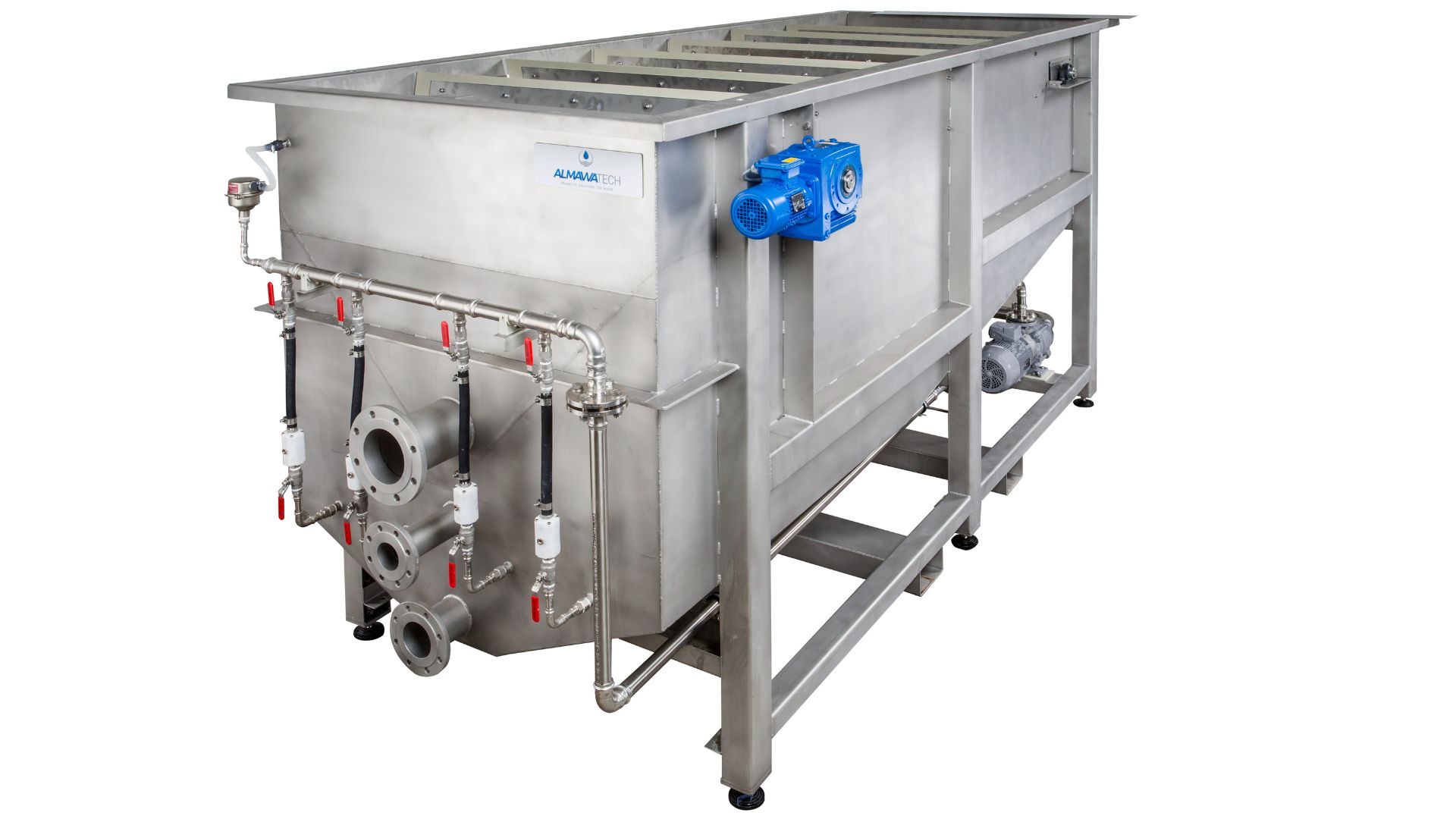
Photo: Our ALMA NeoDAF flotation plant
Advantages and challenges of felling systems
Advantages:
- Precipitation systems are versatile and can effectively remove a wide range of dissolved substances.
- They are flexibly adaptable, as the dosage of precipitants and the pH setting can be varied depending on the composition of the wastewater.
- These systems can be easily integrated into existing systems and combined with other processes such as flocculation, filtration or flotation to optimize separation performance.
Challenges:
- Precise control of the pH value and dosing of the precipitants require continuous monitoring and automation to ensure optimum precipitation.
Conclusion
Precipitation plants are essential units in modern industrial wastewater treatment. They offer a flexible and effective method for removing heavy metals, phosphates and other dissolved pollutants from wastewater. By combining them with other treatment steps such as flocculation and filtration the efficiency and reliability of the entire system can be maximized. These systems are therefore an important part of complying with legal requirements and improving water quality.
For further information on our products, please feel free to contact us at any time!




